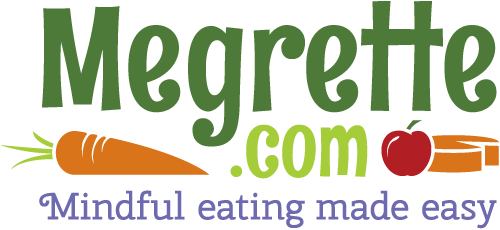As a health professional, you know fear is not effective at promoting long-term change. In fact, motivating clients with fear is not only ineffective, but can lead to misinformation, misunderstanding, and toxic emotions such as blame, shame, and depression. Teaching patients with diabetes to not be afraid of eating, specifically carbohydrates, is the main focus of my education sessions.
In the book Eat What You Love, Love What You Eat with Diabetes, Michelle May, MD and I tackle some of these harmful thoughts about food and eating. Recently, Christine, a dietitian who recently completed the Am I Hungry? Mindful Eating for Diabetes Training, asked for tips to help a client overcome fear of eating carbohydrates. (Listen to our counseling conversation here.) When I think a client is stuck in “diet-thinking,” here is one tool I consistently offer.
Most of my clients explain they are trying to be “good” when they come into a session. This is my first red flag that a client may be stuck in a restrictive thinking mindset. They list off many positive changes like reading labels and eating more regularly. I love to applaud the positive behaviors and then seek to learn why the client thinks these changes are helpful. I do this by simply asking, “What is the benefit of reading the labels?” And most people explain they feel more confident understanding what to look for and that learning more about carbs is helpful. However, if this isn’t the case and my client expresses resistance and frustration at the ideas of reading a food label, it offers me an opportunity to learn more about their confusion, conflicts, and current eating struggles.
After this counseling exchange, my clients feel safe and start to offer more information, often in the form of the darker emotions with which they are dealing. These feelings arise from many sources, such as a comment their provider or a friend made, or as a result of other direct experiences. Regardless of the source, the most common emotion shared is fear, and it is expressed as a fear of eating. This angst is easy to understand when every day clients are bombarded with health messages to limit, restrict, avoid, and feel guilty for eating carbohydrates. These negative food and eating messages are harmful and do not align with my nonjudgment view of food. When I ask, “Do you think all foods can fit into your diet when you have diabetes?”, they often stare at me in disbelief.
You know that look as well as I do. The question is what to do when you see it. For me, this deer in the headlight look tells me the client is overwhelmed with emotions and can’t hear me, so I need to shift my counseling technique from talking to creating an experience. One activity that has been effective is the Healthy Eating vs. Restrictive Dieting Activity, located on page 27 of Eat What You Love, Love What You Eat with Diabetes.
Here is what I do in an individual session.
I will often swing my chair around, so I am sitting next to the client. Then I ask the client to read a “Healthy” word, then I read the contrasting “Restrictive” word. After taking turns reading these words, I pause and ask the client, “What did you think about this activity?” If there is an unusual amount of silence, I will wait and ask, “Did something surprise you?”
I have found that this activity is extremely helpful at opening the discussion to explore the underlying beliefs surrounding food. In the Mindful Eating Cycle, this is the question, “Why do I eat?” The Mindful Eating Cycle is another excellent way to bring the counseling conversation to a place of exploration.
I continue to find it helpful to understand how a client’s thoughts, feelings, actions, and results create a cycle which either reinforces change or stops it dead in its tracks. This is explained in Chapter 4 of Eat What You Love, Love What You Eat with Diabetes which explores the types of thoughts clients have. This chapter makes it is easy to see how self-limiting thoughts trap your client into believing change isn’t possible. To learn more about how mindful eating can help your clients with prediabetes or diabetes, please visit Am I Hungry? Mindful Eating for Diabetes.

